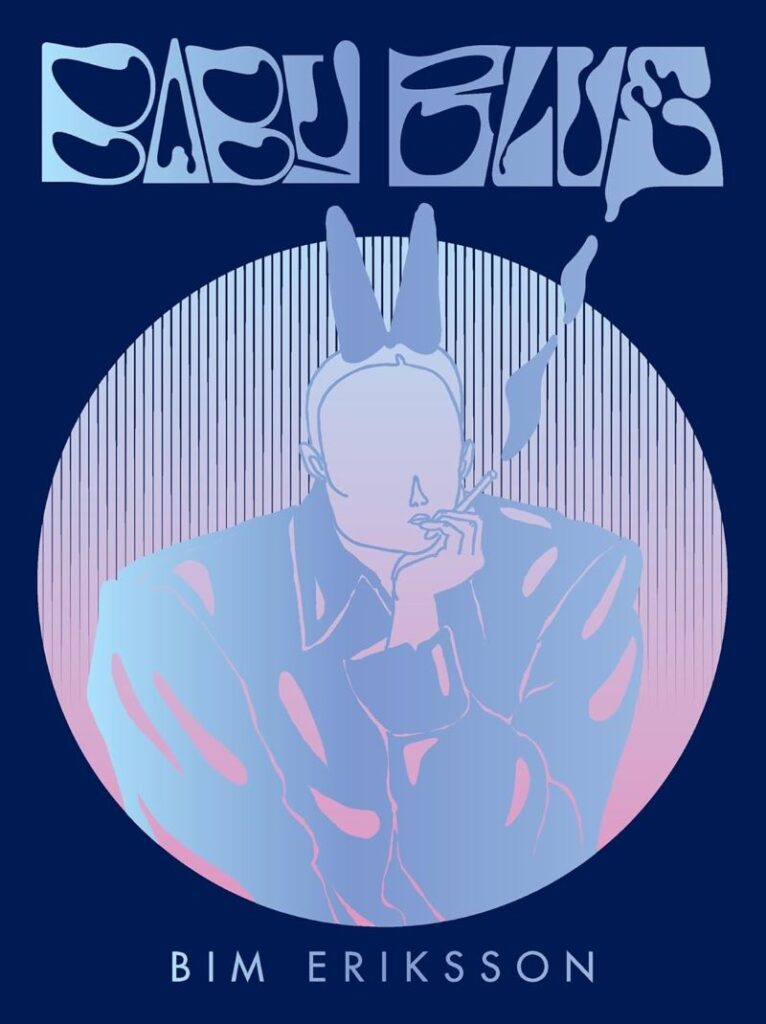
“You’re an odd duck, which is actually a remarkable thing.” This is how Betty’s drug dealer describes her early in Bim Eriksson’s sublime U.S. debut graphic novel. As an underemployed young queer woman, Betty is constantly on guard against patrolling government agents dedicated to stamping out any deviations from preferred societal norms. Eriksson’s imagined fascist society bears eerie similarities to our own current political landscape, making for a riveting story anchored by her stylish blue-and-white artwork.
Buy Baby Blue paperbackWhen Betty’s luck evading agents finally runs out, she finds herself in a treatment center intended to make her compliant. Instead, she meets a rebel fellow patient named Berina who introduces her to an underground resistance movement opposed to the fascists. With a new set of friends and a simmering romance with Berina, Betty is set on a new path as she finally finds hope for the future.
Eriksson crafts a fully realized, claustrophobic world where negative emotions are illegal, with the ruling powers chemically treating deviants to make a society of shiny happy people mindlessly performing their assigned duties. While the dystopian themes are well-worn, Eriksson’s approach feels fresh thanks to her all-female resistance characters and romance, as well as some surprising dissension and intrigue within the resistance ranks.
She makes it clear that the story is based in her native Sweden, and while it’s completely fictional, it’s still interesting to consider that it has some basis in her perception of a Swedish society we would normally consider fairly idyllic. Her Swedish prime-minister character explains his views during a TV interview late in the book, offering a chilling parallel to our own situation with his claims of false narratives laid out by his political opponents and talk of removing civil liberties from dissenters without due process.
Eriksson’s sparse but effective artwork brilliantly conveys the sterility of the ideal society, as well as the seedy elements bubbling just beneath the surface, including street drug culture and political unrest. She has a unique style, with small-headed figures that appear loosely structured at first until it becomes evident how precise they remain throughout the book. The characters are largely expressionless, a nod to their attempts to suppress emotions. Pages are generally laid out in basic six-panel grids, again a choice that can be read as adherence to conformity. She has a fascinating, assured line with just enough weirdness thrown in to make for a thrilling visual ride.